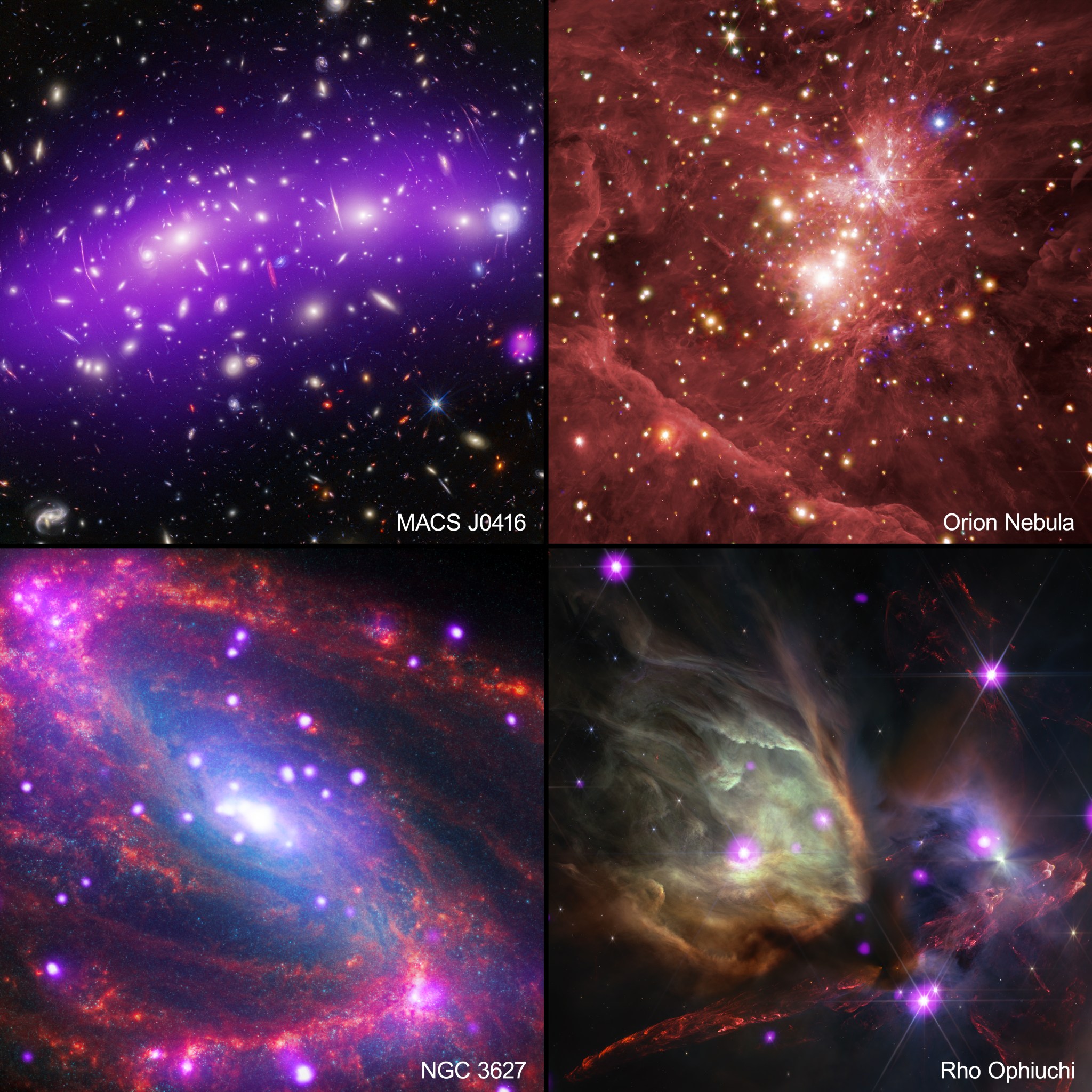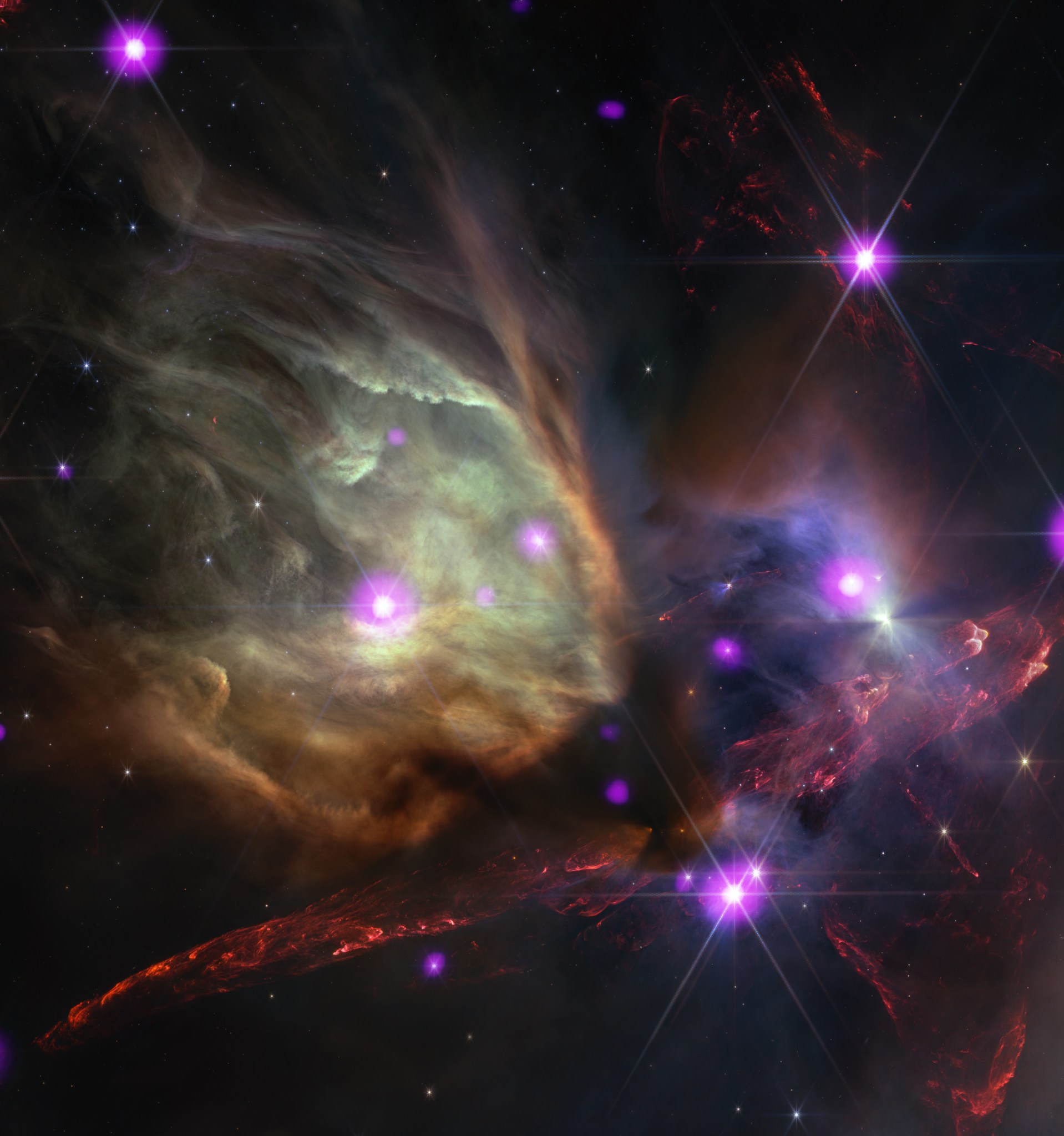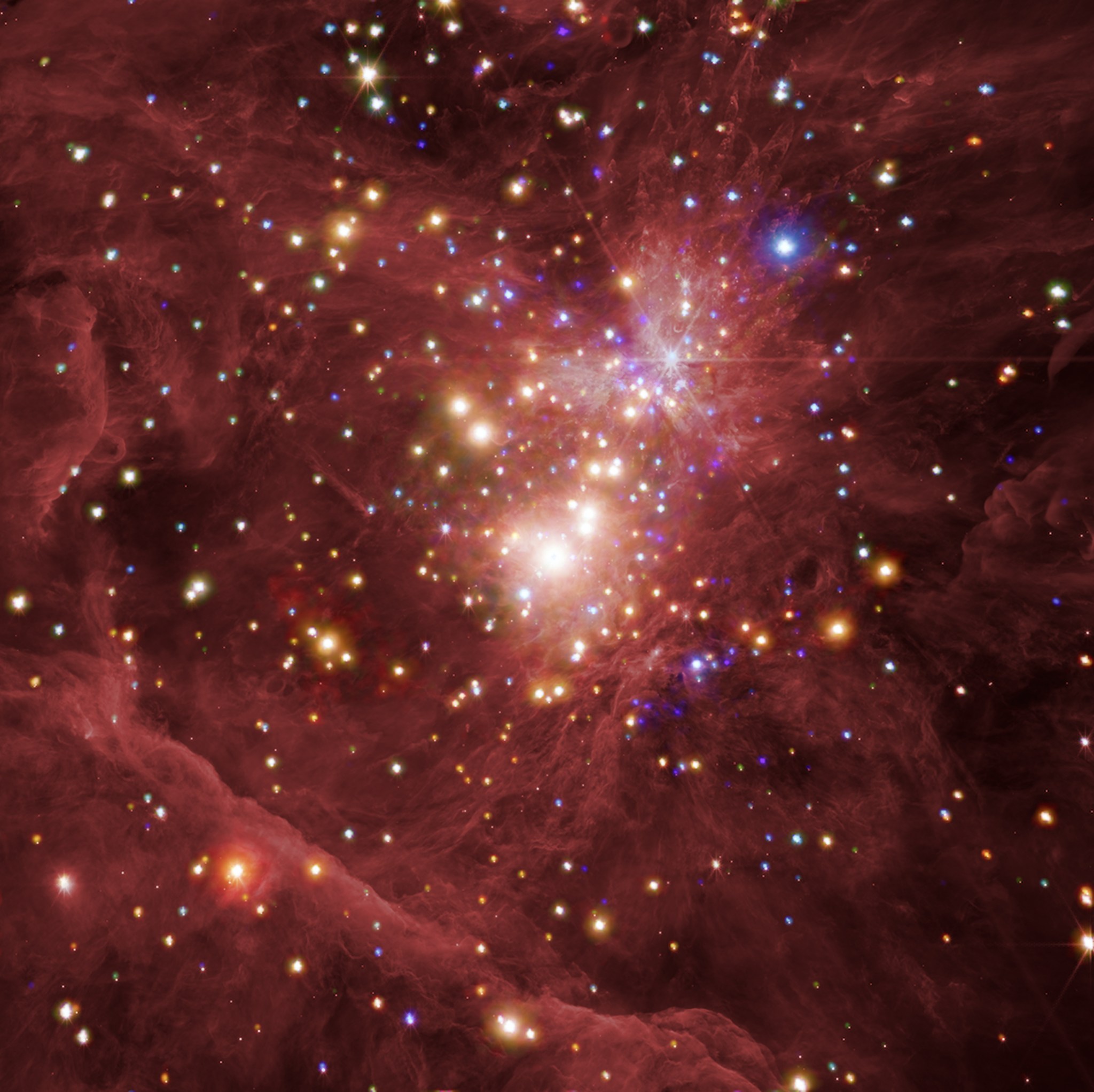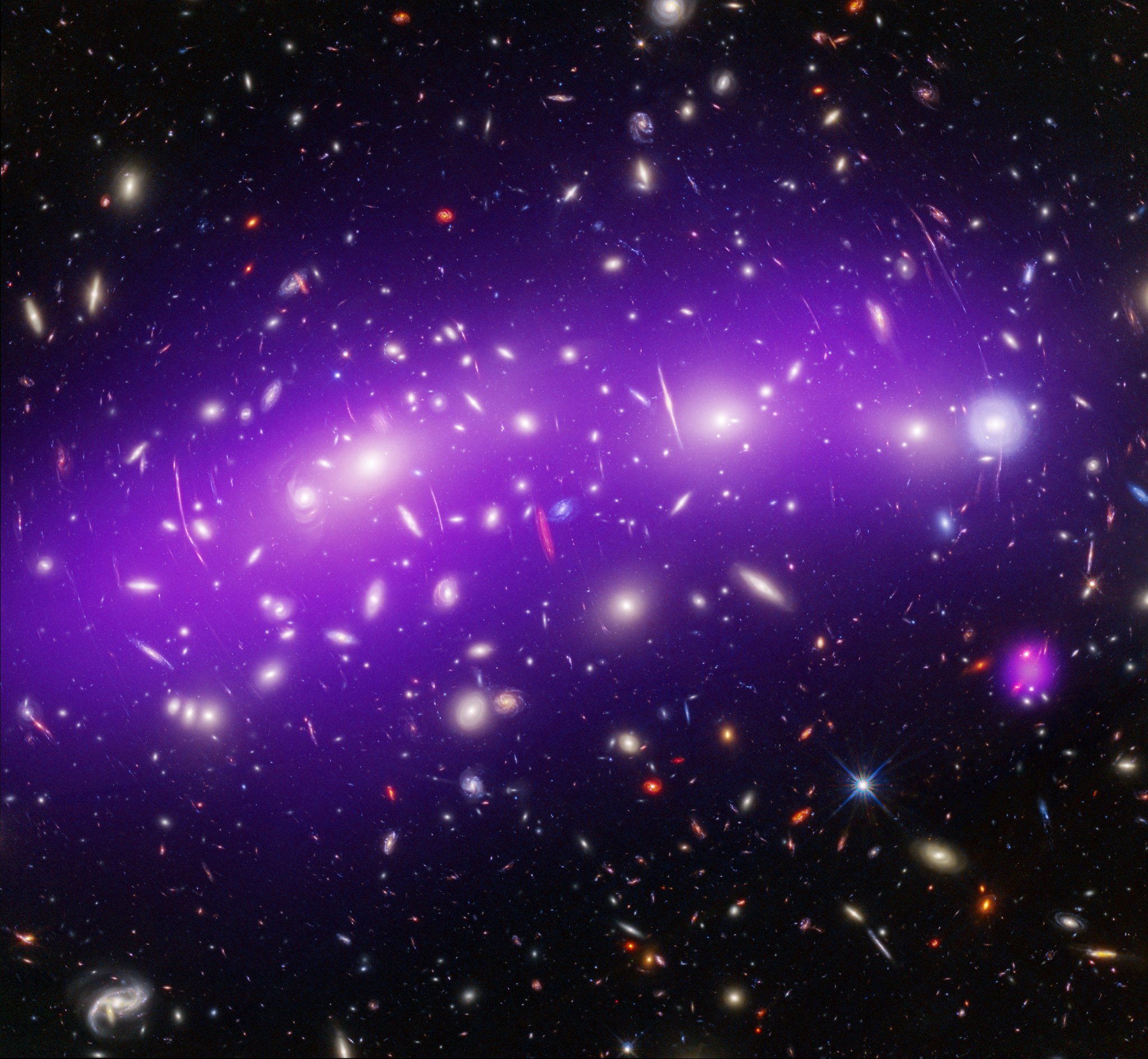

It’s time to take a cosmic road trip using light as the highway and visit four stunning destinations across space. The vehicles for this space get-away are NASA’s Chandra X-ray Observatory and James Webb Space Telescope.
The first stop on this tour is the closest, Rho Ophiuchi, at a distance of about 390 light-years from Earth. Rho Ophiuchi is a cloud complex filled with gas and stars of different sizes and ages. Being one of the closest star-forming regions, Rho Ophiuchi is a great place for astronomers to study stars. In this image, X-rays from Chandra are purple revealing infant stars that violently flare and produce X-rays. Infrared data from Webb are red, yellow, cyan, light blue and darker blue and provide views of the spectacular regions of gas and dust.
The next destination is the Orion Nebula. Still located in the Milky Way galaxy, this region is a little bit farther from our home planet at about 1,500 light-years away. If you look just below the middle of the three stars that make up the “belt” in the constellation of Orion, you may be able to see this nebula through a small telescope. With Chandra and Webb, however, we get to see so much more. Chandra reveals young stars that glow brightly in X-rays, colored in red, green, and blue, while Webb shows the gas and dust in darker red that will help build the next generation of stars here.
It’s time to leave our galaxy and visit another. Like the Milky Way, NGC 3627 is a spiral galaxy that we see at a slight angle. NGC 3627 is known as a “barred” spiral galaxy because of the rectangular shape of its central region. From our vantage point, we can also see two distinct spiral arms that appear as arcs. X-rays from Chandra in purple show evidence for a supermassive black hole in its center while Webb finds the dust, gas, and stars throughout the galaxy in red, green, and blue. This image also contains optical data from the Hubble Space Telescope in red, green, and blue.
Our final landing place on this trip is the farthest and the biggest. MACS J0416 is a galaxy cluster, which are among the largest objects in the Universe held together by gravity. Galaxy clusters like this can contain hundreds or even thousands of individual galaxies all immersed in massive amounts of superheated gas that Chandra can detect. In this view, Chandra’s X-rays in purple show this reservoir of hot gas while Hubble and Webb pick up the individual galaxies in red, green, and blue.
NASA’s Marshall Space Flight Center manages the Chandra program. The Smithsonian Astrophysical Observatory’s Chandra X-ray Center controls science from Cambridge Massachusetts and flight operations from Burlington, Massachusetts.
Read more from NASA’s Chandra X-ray Observatory.
For more Chandra images, multimedia and related materials, visit:
https://www.nasa.gov/mission/chandra-x-ray-observatory/
Visual Description:
This release features four distinct composite images from NASA’s Chandra X-ray Observatory and the James Webb Space Telescope, presented in a two-by-two grid.
At our lower right is Rho Ophiuchi, a cloud complex filled with gas, and dotted with stars. The murky green and gold cloud resembles a ghostly head in profile, swooping down from the upper left, trailing tendrils of hair. Cutting across the bottom edge and lower righthand corner of the image is a long, narrow, brick red cloud which resembles the ember of a stick pulled from a fire. Several large white stars dot the image. Many are surrounded by glowing neon purple rings, and gleam with diffraction spikes.
At our upper right of the grid is a peek into the heart of the Orion Nebula, which blankets the entire image. Here, the young star nursery resembles a dense, stringy, dusty rose cloud, peppered with thousands of glowing golden, white, and blue stars. Layers of cloud around the edges of the image, and a concentration of bright stars at its distant core, help convey the depth of the nebula.
In the lower left of the two-by-two grid is a hazy image of a spiral galaxy known as NGC 3627. Here, the galaxy appears pitched at an oblique angle, tilted from our upper left down to our lower right. Much of its face is angled toward us, making its spiral arms, composed of red and purple dots, easily identifiable. Several bright white dots ringed with neon purple speckle the galaxy. At the galaxy’s core, where the spiral arms converge, a large white and purple glow identified by Chandra provides evidence of a supermassive black hole.
At the upper left of the grid is an image of the distant galaxy cluster known as MACS J0416. Here, the blackness of space is packed with glowing dots and tiny shapes, in whites, purples, oranges, golds, and reds, each a distinct galaxy. Upon close inspection (and with a great deal of zooming in!) the spiraling arms of some of the seemingly tiny galaxies are revealed in this highly detailed image. Gently arched across the middle of the frame is a soft band of purple; a reservoir of superheated gas detected by Chandra.
News Media Contact
Megan Watzke
Chandra X-ray Center
Cambridge, Mass.
617-496-7998
Lane Figueroa
Marshall Space Flight Center
Huntsville, Ala.
256-544-0034












